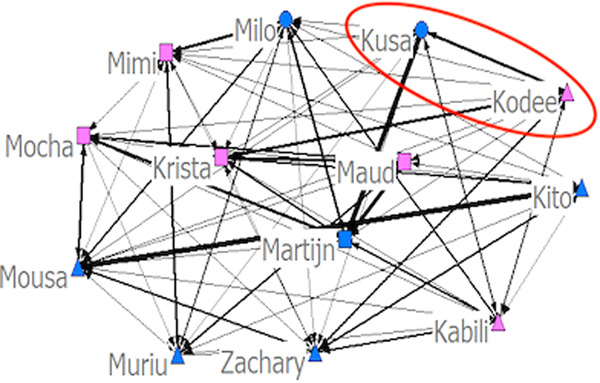Dr. Karin E. Jaffe, Professor of Anthropology and Associate Dean of the School of Social Sciences, recently co-authored two papers in Zoo Biology using social network analysis to understand group dynamics in Oakland Zoo’s hamadryas baboons (Papio hamadryas). These papers were co-authored with Louisa M. Radosevich (2017 graduate of the SSU Biology graduate program), Holly G. Molinaro (2020 graduate of the SSU Biology graduate program), and Darren Minier (Assistant Director of Animal Care at Oakland Zoo):
- Radosevich, R.M., Jaffe, K.E., and Minier, D. (2021) “The utility of social network analysis for informing zoo management: Changing network dynamics of a group of captive hamadryas baboons (Papio hamadryas) following an introduction of two young males.” Zoo Biology Early View (June 2021).
- Molinaro, H.G., Minier, D., and Jaffe, K.E. (2021) “Using social network analysis to inform on the process of one-male-unit formation of hamadryas baboons (Papio hamadryas) in captivity,” Zoo Biology Early View (November 2021).

represent adults, triangles represent juveniles, circles represent subadults.
Blue shapes are males; pink shapes are females.
Social network analysis uses pair-wise association data (such as dominance interactions and affiliative behavior) to build networks that consist of ‘nodes’ (i.e., individuals) connected by ‘edges’, the thickness of which indicates the strength of the relationship (i.e., the number of interactions). These publications show that social network analysis is a useful tool for assessing the effects of management decisions, such as the introduction of new group members, on group structure and social interactions while also testing hypotheses about species-typical behavior, such as one-male-unit (aka: harem) formation. This affiliative network (from Molinaro, et al., 2021; see photo, right) shows a strong connection between one of the subadult males, Kusa, and a juvenile female, Kodee (circled). The strong relationship (indicated by a thicker line between the two), is indicative of the initial unit pathway formation of one-male-units, which has also been observed in wild hamadryas baboons. This suggests that the hamadryas baboons at Oakland Zoo are exhibiting species-typical behavior.







